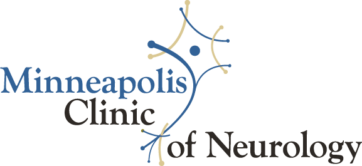Complementary and alternative medicine treatments are increasingly employed to supplement traditional Western medicine treatments in neurology. These include acupuncture, natural tactic medicine, homeopathic medicine, massage, chiropractic treatment, herbal medicine, exercise regimens and dietary interventions, to name only the most common types. Until recently, the unproven and empiric (“try it and see if it works”) nature of complementary and alternative medicine treatments were at odds with the rigorous but rigid requirements of the scientifically proven effectiveness of traditional Western medicine. More recently, doctors have become increasingly receptive to the use of complementary and alternative medicine, and scientific studies of the safety and effectiveness of complementary and alternative medicines is being undertaken through the National Institutes of Health. A brief discussion of each of the complementary and alternative medicine options and their common usefulness in neurology patients follows.
Acupuncture
Acupuncture is a component of traditional Chinese medicine in which it is presumed that disease symptoms are caused by the disruption of the normal circulation of the vital body energy Qi. Acupuncture involves the placement of very thin needles in precise locations to normalize the flow of Qi. Specialized training for physicians and non-physicians is necessary to practice acupuncture, and the amount and duration of training is directly related to the expertise of the practitioner. Acupuncture may be used in conjunction with Chinese herbal medicine, or Qi Gong, a form of specialized exercises to normalize the flow of Qi. Acupuncture has been demonstrated to be helpful for the treatment of headache and chronic low back pain, among other medical problems.
Naturopathic Medicine
Naturopathic medicine is a method of alternative medicine based on the theory that physical symptoms are produced by the body’s reaction to internal attacks and stress, and emphasizes the human body’s innate healing power. A healthy diet, appropriate rest, exercise and a positive mental and emotional state are the keystones of treatment regimens, with the additional use of hot baths, colonic cleansing, herbs and vitamin supplements.
Homeopathy
Homeopathy treats illnesses with extremely diluted preparations of substances thought to produce similar symptoms to the illness being treated. That substance is mixed with water and then diluted to the point where none of the original substance remains, but its healing power continues to be strengthened with progressive dilution. Vitamins, herbs and other supplements may also be used.
Physician Manipulation
Physical manipulation, in the form of various types of massage, physical therapy, tai chi or Qi Gong, involves either exercise, or manipulation of top soft tissues of the body to improve range of motion, function, reduce pain, or improve the body’s natural energy flow. A variety of styles and methods have been developed, depending on the underlying theory and country of origin.
Chiropractic Treatment
Chiropractic treatment is based on the theory that subluxations of the spine produce effects on the spinal nerves, and influence other organs to produce clinical symptoms. Most chiropractors combine a number of techniques, including manipulation, massage, use of a spring-loaded “activator”, traction, herbal and vitamin preparations and occasionally acupuncture. Some chiropractors believe in the necessity of long-term or even lifelong therapy, and have added herbs and vitamins to their treatment regimens. Chiropractic treatment has been demonstrated to be helpful for acute low back pain, and perhaps to some degree for neck pain and muscle contraction headaches.
Herbal Medication
Herbal medication derives from traditional, cultural, or other origins and consists of preparations of plants and minerals to produce a healing effect. Many traditional Western medicine pharmaceuticals have their origins in herbal medicine, including drugs for the treatment of pain (aspirin from willow bark and morphine from poppy plant pods), cancer (Vinca alkaloids from periwinkle and tamoxifen from yew plants). Herbal preparations have been demonstrated to be effective for mild depression (St. John’s wort), migraine headaches (Butterbur) and mild memory loss (ginkgo biloba). Herbal preparations, even those that are commonly used, can interfere with the action or effectiveness of pharmaceuticals or produce toxicity on their own. Herbal preparations are not adequately standardized or regulated in the United States (as they are in Germany, for example) and the safety, strength and efficacy of preparations are unreliable.
Dietary Manipulation
Dietary manipulation to achieve specific health effects has been employed for thousands of years and continues to be used. If a dietary program remains within the broad outlines of an appropriate balanced nutritional diet, it can supplement traditional Western medicine practice. Some unusual and potentially toxic diets have been used to treat epilepsy. Additionally, like herbal preparations, extremely high doses of otherwise healthful dietary supplements can be toxic (for example, megadoses of vitamin A can produce severe liver toxicity and vitamin B 6 can produce peripheral neuropathy).
It is extremely important that all patients provide a comprehensive list of all of their medications, dietary supplements and vitamins and doses to their healthcare provider. As was described, natural substances, herbs and dietary supplements you’re taking in certain combinations, or with other medicines, can produce severe negative side effects. Many “natural” substances, such as cyanide or botulinum toxin, can be quite harmful.
Your physician will determine whether there are any negative interactions, and can discuss the potential benefits and risks of the complementary and alternative medicines at your visit, and assist you in making choices regarding their place in your overall treatment regimen.
